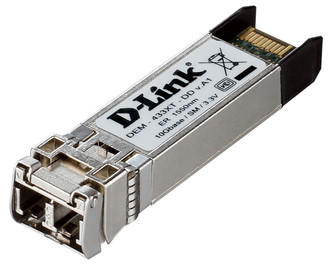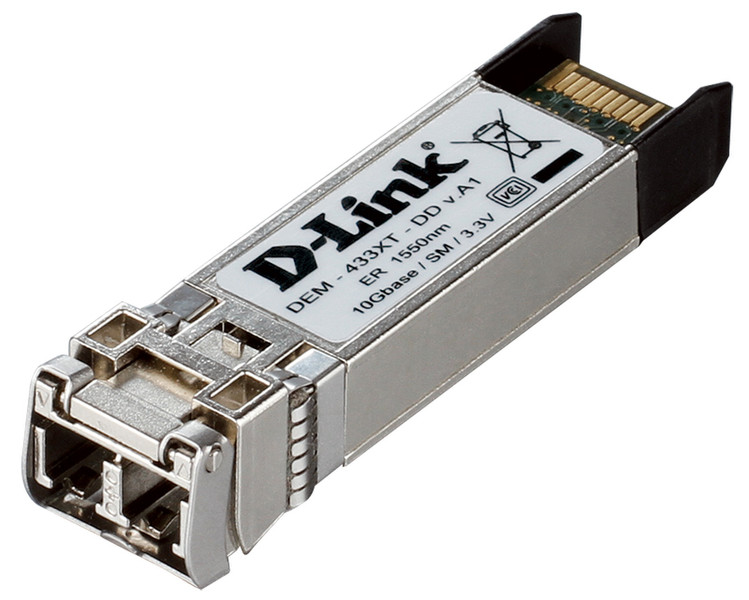Catalog
-
Catalog
- Antiquitäten & Kunst
- Auto & Motorrad: Fahrzeuge
- Baby
- Business & Industry
- Bücher
- Camping & Outdoor
- Feinschmecker
- Garden & patio
- Haustierbedarf
- Heimwerken & Garten
- HiFi & Audio
- Home, Construction, Renovation
- Household appliances
- Kleidung & Accessoires
- Modellbau
- Musik
- PC- & Videospiele
- Photo & camcorders
- Sammeln & Seltenes
- Spielzeug
- TV, Video, DVD
- Telekommunikation
- Uhren & Schmuck
- Wellness & Beauty
- computers & electronics
- entertainment & hobby
- fashion & lifestyle
- food, beverages & tobacco
- health & beauty
- institutional food services equipment
- medical equipment, accessories & supplies
- office
- sports & recreation
- vehicles & accessories
- weapons & ammunition
Filters
Search

D-Link DEM-433XT-DD 10000Mbit/s SFP+ 1550nm Single-mode network transceiver module
MPN: DEM-433XT-DD
🚚 Select the country of delivery:
Delivery from:
Germany
Sale and delivery by:
Where to buy and prices (Advertising *)
On Top
Technical specifications
On Top
Performance
| Hot-Plug support | Y |
|---|---|
| Digital Diagnostics Monitoring (DDM) | Y |
| Tx power (min) | -4.7 dBmW |
| Fiber cable diameters supported | 9/125 µm |
| Rx power (min) | -14.1 dBmW |
| Rx power (max) | -1 dBmW |
| Maximum transfer distance | 40000 m |
| Tx power (max) | 4 dBmW |
| Wavelength | 1550 nm |
Features
| RX sensitivity | -14.1 dB |
|---|
Power
| Input voltage | 3.3 V |
|---|---|
| Maximum current | 0.4 A |
Networking
| Interface type | SFP+ |
|---|
Certificates
| Safety | UL, TUV, CDRH |
|---|
Additionally
| Transfer rate (Mbps) | 10000 Mbit/s |
|---|
10GBASE-ER SFP+, 9/125µm, 40km, Single-mode, 1550nm
D-Link’s 10G SFP+ Module series are hot-swappable SFP+ transceivers that plug into SFP+ slots on switches and support 10G Ethernet. The D-Link 10GBASE SFP+ Module Series transceivers offer customers a wide variety of 10G Ethernet connectivity options for data centers, enterprise wiring closets, and service provider transport applications.
Enhanced Small Form-factor Pluggable Format
The transceivers use the Enhanced Small Form-factor Pluggable format (SFP+). The SFP+ form factor is smaller than other form factors such as Xenpak, X2, and 10G XFP, ensuring lower costs, lower power disruption, and higher port density. They provide the necessary signal amplification for data to be transmitted to the network cable from the port, and vice versa, for the port to receive data from the network cable.
Hot Pluggable
All D-Link transceivers are hot-pluggable. You can connect a transceiver while the system is powered on without causing any problems. This permits modules to be added or removed without interrupting the network.
10G Ethernet speeds
The transceivers all support 10G Ethernet, which results in very fast data transmissions of up to 10Gbit/s. This is 10 times faster than Gigabit Ethernet and enables the switch to handle faster and higher data transmissions, making it very suitable for business needs.
Digital Diagnostics Monitoring (DDM)
Several of the 10G SFP+ Modules feature DDM real-time monitoring of critical parameters, including transmitted and received power, temperature, and voltage. This allows for convenient monitoring of the module’s fiber connection and early detection of problems.
Bi-directional WDM transmission
Bi-directional WDM transmission allows data to be transmitted simultaneously in both directions on a fiber cable. This helps you save on the cost of deploying extra fiber cables as well as allows for more flexible bandwidth allocation.
Enhanced Small Form-factor Pluggable Format
The transceivers use the Enhanced Small Form-factor Pluggable format (SFP+). The SFP+ form factor is smaller than other form factors such as Xenpak, X2, and 10G XFP, ensuring lower costs, lower power disruption, and higher port density. They provide the necessary signal amplification for data to be transmitted to the network cable from the port, and vice versa, for the port to receive data from the network cable.
Hot Pluggable
All D-Link transceivers are hot-pluggable. You can connect a transceiver while the system is powered on without causing any problems. This permits modules to be added or removed without interrupting the network.
10G Ethernet speeds
The transceivers all support 10G Ethernet, which results in very fast data transmissions of up to 10Gbit/s. This is 10 times faster than Gigabit Ethernet and enables the switch to handle faster and higher data transmissions, making it very suitable for business needs.
Digital Diagnostics Monitoring (DDM)
Several of the 10G SFP+ Modules feature DDM real-time monitoring of critical parameters, including transmitted and received power, temperature, and voltage. This allows for convenient monitoring of the module’s fiber connection and early detection of problems.
Bi-directional WDM transmission
Bi-directional WDM transmission allows data to be transmitted simultaneously in both directions on a fiber cable. This helps you save on the cost of deploying extra fiber cables as well as allows for more flexible bandwidth allocation.
-
Payment Methods
We accept:











